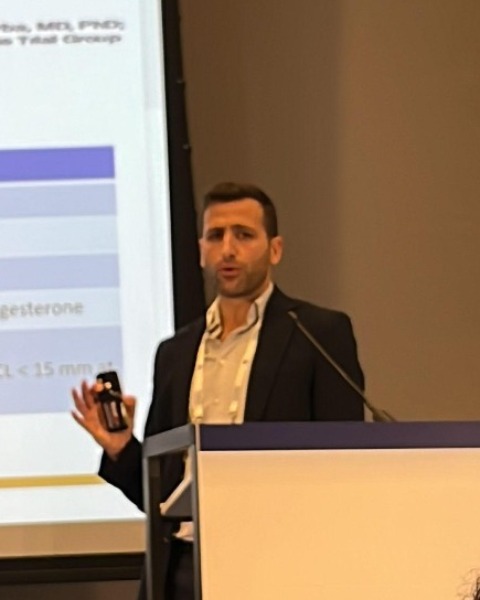Labor
Poster Session 3
(725) Impact of Maternal Age on the Risk for Perineal Injury and OASI in Nulliparous Women

Emmanuel Attali, MD
Lis Maternity Hospital, Department of Obstetrics and Gynecology, Sourasky Medical Center, Tel Aviv University
Tel Aviv, Israel- DG
Daniel Gabbai, MD,MPH
Tel Aviv Sourasky Medical Center
Tel Aviv, HaMerkaz, Israel - YY
Yariv Yogev, MD
Lis Hospital for Women's Health, Tel Aviv Sourasky Medical Center
Tel Aviv, Israel, Israel - YB
Yoav Baruch, MD
Lis Hospital for Women’s Health, Tel Aviv Sourasky Medical Center, Tel Aviv University, Tel Aviv, Israel
Tel Aviv, Tel Aviv, Israel
Primary & Presenting Author(s)
Coauthor(s)
Study Design:
A retrospective, cohort population-based study was conducted in a tertiary, university-affiliated medical center from (January 2011- December 2020). The study included all nulliparous women with singleton pregnancies at term (37-41 weeks of gestation) in vertex and only with occiput anterior presentation who received epidural analgesia during labor. Exclusion criteria included stillbirth, and chronic and obstetric maternal conditions (hypertension, diabetes mellitus, etc.). Instrumental vaginal deliveries or deliveries in which episiotomy was performed were also excluded. The population was divided into two groups by age (20-25 vs 30-35 years old) and their characteristics were compared. The primary outcome was the incidence of perineal injury, defined as any spontaneous perineal tear, and/or OASI.
Results:
(1) Overall during the study period 39,596 nulliparas women delivered vaginally in our center. Of them 3,410 (8.61%) women met the study criteria, with 843 (24.72%) in the 20-25 age group and 2,567 (75.23%) in the 30-35 age group.
(2) Significant differences were observed between the two age groups in terms of ethnicity, maternal weight prior to pregnancy and at delivery, gestational glucose challenge test results, gestational age at delivery, duration of the second stage of labor, and birthweight (Table).
(3) The incidence of perineal injury and OASI were significantly higher in the younger group (perineal injuries: 58% vs. 53.2%; p-value= 0.015) OASI (0.9% vs 0.4%, p-value: 0.04).
(4) In multivariable logistic regression analysis for maternal age and perineal injury, the overall odds ratio for perineal injury in relation to age category was calculated as 1.22 (CI: 1.03-1.44; p-value: 0.023), indicating a higher risk of perineal injury in the 20-25 age group compared to the 30-35 age group.
Conclusion:
This study suggests that young maternal age may be associated with an increased risk of perineal injury in nulliparous women

